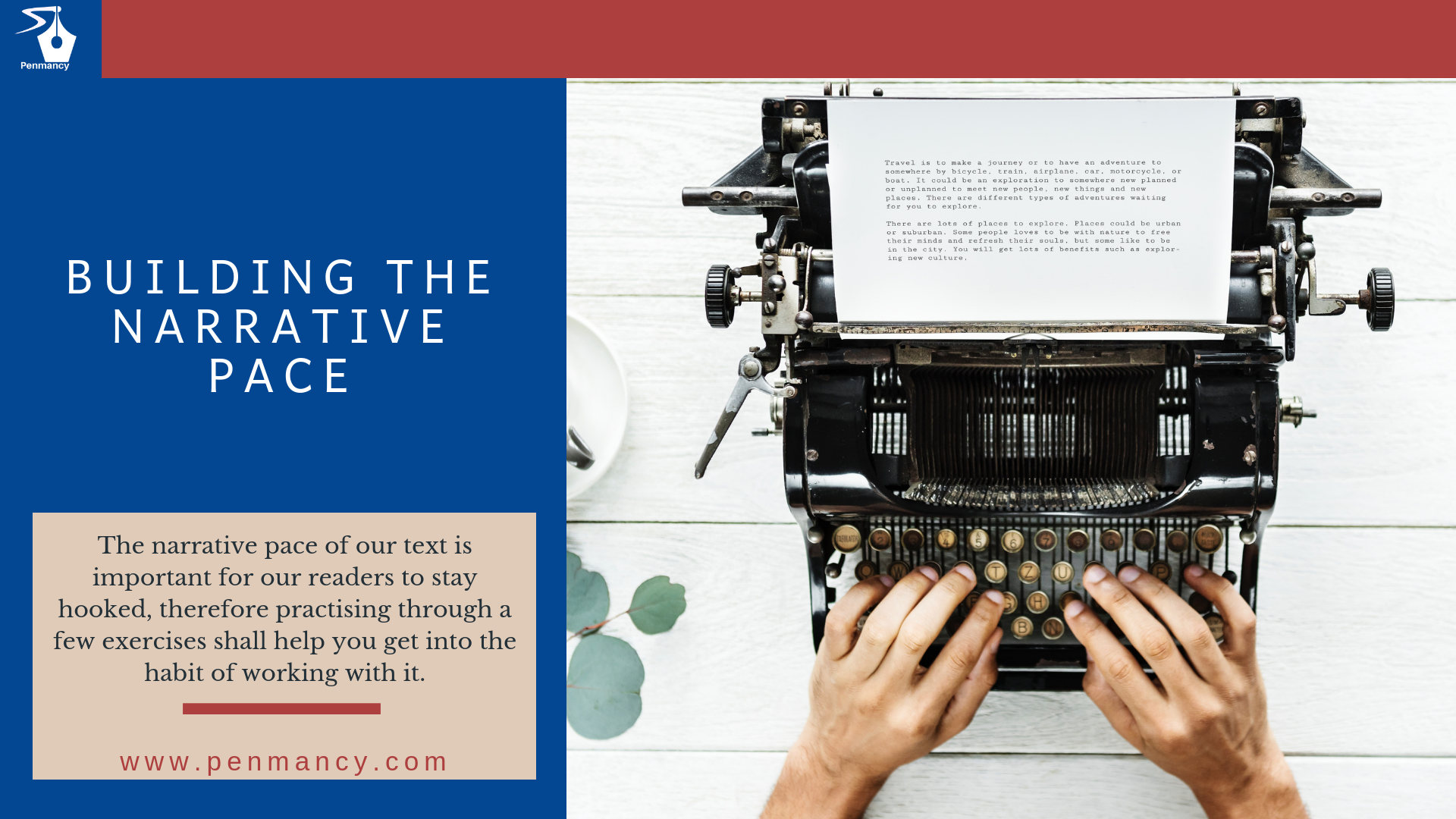
Narrative pace is the pace at which your story’s action is paced at. The two factors that govern the narration are the tone of voice and the choice of words. To make them pace well there are some grammatical tools that can help make your story an effective one.
- Using the Participial Phrase:
Participles are verbs that act as adjectives in the sentence. In order to build the pace, a participle is a verb ending in -ing that functions as an adjective to modify a noun or pronoun is used. This makes the word a participial phrase. Therefore a participial phrase consists of a participle plus modifier(s), object(s), and/or complement(s).
An example of a participial phrase could be:
“Speeding toward the finish line, Will was going to win the race.”
Here the underlined phrase describes the subject (Will) mid-action when another action (winning the race) interrupts the first. Participles are useful for interrupting actions with other actions in this way.
You can use the participial phrase to show simultaneous action, that creates a sense of events in motion and therefore, builds the pace.
- Using incomplete sentences.
An incomplete sentence is a sentence that does not express a complete thought. A subject or a verb is missing. It could either be a prepositional phrase or a dependent clause.
Narrative pace can move swiftly if an occasional partial or incomplete sentence is included in your sentence structure. For example:
“I am damned…”
“What for,” she asked before she moved towards the window.
“I could hear someone following me… “Gosh, pace up” I scolded the little one.”
Ellipses (…), hyphens (-) or exclamations (!) can suggest interruptions and therefore add a punch or drama to your writing. Pepper them throughout your writing and see how they can help.
- Using degrees of comparison.
The different forms of comparison are the positive, the comparative and the superlative. The comparative form of adjective compares two nouns that can help build the narrative by simply intensifying the comparison.
Here’s an example:
‘A loud thud came from the neighbouring room. Amy looked around for traces. A louder noise forced her to move behind the couch further. It sounded like someone had flipped a heavy object out of the window. The heavy footsteps of the soldiers approaching her house became closer and suddenly she heard the loudest noise of the gunshots.’
- Using intense verbs.
Intensive verbs are usually followed by a noun or a noun phrase, an adjective or a prepositional phrase. For example, “Malcolm raced out of the room quickly” can be replaced by ” Malcolm sprinted out of the room.”
Even though the intense verbs help pace the narrative, their usage at a place where the scene itself is racy can help bring it out better. Especially in a horror tale or a thriller story where the narrative needs to gain momentum, you can use simple playing with the words to intensify.
“She ran to grab a hose to douse the fire. The flames had reached the curtains of her bedroom. She sprinted out of the washer area to direct the turned on hose towards the direction of the fire.”
The character ‘runs’ at the time of low intensity but looking at the stakes ‘sprints’ to show urgency.
- Using active voice at most times.
Even as children we remember our language teachers asking us to write in active voice. Active voice shows responsibility to our narrative and gives credit to the action written about. We would usually say “I drove my car to work” (active) instead of “My car was driven to work by me.” (passive)
Simply put, using an active voice creates a smoother, quicker flowing sentence thereby reducing any clutter. How can one do that? Turn the clause or sentence around, putting the subject first. for example “Jane published her first book with the London Literary Club” instead of “Jane’s first book was published by the London Literary Club.”
The narrative pace of our text is important for our readers to stay hooked, therefore practising through a few exercises shall help you get into the habit of working with it. Hope these tips help you create a masterpiece. Stay tuned for more!
